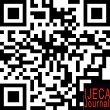Creative Thinking Skills based on Self-efficacy in Creative Problem Solving Learning with Scaffolding
Abstract
Keywords
Full Text:
DOWNLOAD [PDF]References
Ahmad, A., Safaria, T., & Preston University Pakistan. (2013). Effects of Self-Efficacy on Students’ Academic Performance. Journal of Educational, Health and Community Psychology, 2(1), 22–29.
Arifin, P., Trisna, B. N., & Atsnan, M. F. (2018). Mengembangkan self-efficacy matematika melalui pembelajaran pendekatan matematika realistik pada siswa kelas VII D SMP Negeri 27 Banjarmasin tahun pelajaran 2016-2017. Math Didactic: Jurnal Pendidikan Matematika, 3(2), 93–104. https://doi.org/10.33654/math.v3i2.59
Atikasari, G., Agoestanto, A., & Winanti, K. (2018). Meningkatkan berpikir kreatif matematis dan kerjasama melalui model pembelajaran kooperatif strategi TTW berbantuan kartu soal materi trigonometri SMAN 5 Semarang. In Prisma, 1, 601–607.
Faozi, R., Wardono, W., Haryani, S., & Al Miftah Sindangjaya, Mt. (2020). Mathematical Literacy Ability Reviewed From Self-Efficacy In Realistic Mathematics Education Approach. Journal of Primary Education, 9(4), 353–363. https://journal.unnes.ac.id/sju/index.php/jpe
Febrianti, F. M. S., Kadarisma, G., & Hendriana, H. (2018). Analisis Hubungan Kemampuan Berpikir Kreatif Matematis Dan Self Efficacy Siswa Smk. In JPMI (Jurnal Pembelajaran Matematika Inovatif), 1(4), 793. https://doi.org/10.22460/jpmi.v1i4.p793-798
Firdaus, As’ari, A. R., & Qohar, A. (2018). Meningkatkan Kemampuan Berpikir Kreatif Matematis Siswa SMA Melalui Pembelajaran Open-Ended Pada Materi SPLTV. Jurnal Matematika Statistika Dan Komputasi, 15(2), 104. https://doi.org/10.20956/jmsk.v15i2.5719
Firdausi, Y. N., & Asikin, M. (2018). Analisis Kemampuan Berpikir Kreatif Siswa Ditinjau dari Gaya Belajar pada Pembelajaran Model Eliciting Activities ( MEA ). In Prisma, 1, 239–247.
Hidayat, P. W., & Widjajanti, D. B. (2018). Analisis kemampuan berpikir kreatif dan minat belajar siswa dalam mengerjakan soal open ended dengan pendekatan CTL. In Pythagoras: Jurnal Pendidikan Matematika, 13, (1), 63–75. https://doi.org/10.21831/pg.v13i1.21167
Kuswidyanarko, A. (2017). The Analysis of Mathematical Literacy on Realistic Problem-Based Learning with E-Edmodo Based on Student’s Self Efficacy. Journal of Primary Education, 6(2), 103–113.
Lestari, S. (2015). Analisis Kemampuan Keruangan Dan Self Efficacy Peserta Didik Dalam Model Pembelajaran Treffinger Berbasis Budaya Demak. Unnes Journal of Research Mathematics Education, 4(2), 108–114.
Lutviana, I., Kartono, & Isnanto. (2020). Pengaruh model problem based learning dengan immediate feedback assesment technique terhadap pencapaian komunikasi matematis. In Prisma, 3, 247–251.
Maftukhah, N. A., Nurhalim, K., Dasar, P. P., & Semarang, U. N. (2017). Kemampuan Berpikir Kreatif dalam Pembelajaran Model Connecting Organizing Reflecting Extending Ditinjau dari Kecerdasan Emosional. Journal of Primary Education, 6(3), 267–276.
Malisa, S., Bakti, I., & Iriani, R. (2018). Model Pembelajaran Creative Problem Solving (Cps) Untuk Meningkatkan Hasil Belajar Dan Kemampuan Berpikir Kreatif Siswa. In Vidya Karya, 33(1), 1-20. https://doi.org/10.20527/jvk.v33i1.5388
Masitoh, L. F., & Hartono, H. (2017). Pengembangan perangkat pembelajaran matematika dengan pendekatan PBL berorientasi pada kemampuan berpikir kreatif dan self-efficacy. In Pythagoras: Jurnal pendidikan Matematika, 12(2), 220–230.
Mawaddah, N., Suyitno, H., & Kartono, K. (2015). Model Pembelajaran Discovery Learning Dengan Pendekatan Metakognitif Untuk Meningkatkan Metakognisi Dan Kemampuan Berpikir Kreatif Matematis. In Unnes Journal of Research Mathematics Education, 4(1), 10–17.
Melianingsih, N., & Utami, D. T. (2019). Keefektifan Model Pembelajaran Tipe Think Pair Share terhadap Prestasi Belajar Matematika Ditinjau dari Self Efficacy Siswa. In SAP: Susunan Artikel Pendidikan, 4(1), 17-24. https://doi.org/10.30998/sap.v4i1.2754
Nadia, L. N., Waluyo, S. B., & Isnarto. (2017). Analisis Kemampuan Representasi Matematis Ditinjau dari Self Efficacy Peserta Didik melalui Inductive Discovery Learning. Ujmer, 6(2), 242–250. http://journal.unnes.ac.id/sju/index.php/ujmer
Ningsih, W. F., & Hayati, I. R. (2020). Dampak efikasi diri terhadap proses dan hasil belajar matematika. In Journal on Teacher Education, 1(2), 26–32. https://journal.universitaspahlawan.ac.id/index.php/jote/article/view/514
Nurhayati, E. (2017). Penerapan Scaffolding untuk Pencapaian Kemandirian Belajar Siswa. Jurnal Penelitian Pendidikan Dan Pengajaran Matematika, 3(1), 21–26.
Özcan, Z. Ç., & Eren Gümüş, A. (2019). A modeling study to explain mathematical problem-solving performance through metacognition, self-efficacy, motivation, and anxiety. Australian Journal of Education, 63(1), 116–134. https://doi.org/10.1177/0004944119840073
Pasandaran, R. F., & Rusli, B. M. (2016). Profil Berpikir Dalam Menyelesaikan Masalah Aljabar Berpandu Pada Taksonomi SOLO Dtinjau Dari Tingkat Efikasi Diri Pada Siswa SMP Al-Azhar Palu. Pedagogy, 1(1), 86–146.
Pratama, G. S., & Retnawati, H. (2018). Urgency of Higher Order Thinking Skills (HOTS) Content Analysis in Mathematics Textbook. Journal of Physics: Conference Series, 1097(1). https://doi.org/10.1088/1742-6596/1097/1/012147
Putra, H. D., Setiawan, W., & Afrilianto, M. (2020). Indonesian high scholar difficulties in learning mathematics. International Journal of Scientific and Technology Research, 9(1), 3466–3471.
Putra, Y. P. (2018). Penggunaan Model Pembelajaran Creative Problem Solving untuk Meningkatkan Kemampuan Berpikir Kreatif dan Motivasi Belajar Matematika Siswa. In JPEM: Jurnal Penelitian Pendidikan dan Pengajaran Matematika, 4(2), 73–80. jurnal.unsil.ac.id/index.php/jp3m
Qadri, L., Ikhsan, M., & Yusrizal, Y. (2019). Mathematical Creative Thinking Ability for Students Through REACT Strategies. International Journal for Educational and Vocational Studies, 1(1), 58. https://doi.org/10.29103/ijevs.v1i1.1483
Rahayu, G. S. I., & Zanthy, L. S. (2019). Analisis Kemampuan Berpkir Kreatif Matematis dan Self Efficacy Siswa SMP Terhadap Soal Persamaan Garis Lurus. Journal on Education, 1(3), 243–251.
Ratnaningsih, N. (2019). The Analysis of Dyscalculia Students Learning Difficulty in Inclusive Education of Primary School Level in Tasikmalaya. JPMI, 2(2), 42–45.
Razzaq, A., Samiha, Y. T., & Anshari, M. (2018). Smartphone habits and behaviors in supporting students self-efficacy. In International Journal of Emerging Technologies in Learning, 13(2), 94–109. https://doi.org/10.3991/ijet.v13i02.7685
Saironi, M., & Sukestiyarno, Y. (2017). Kemampuan Berpikir Kreatif Matematis Siswa dan Pembentukan Karakter Rasa Ingin Tahu Siswa pada Pembelajaran Open Ended Berbasis Etnomatematika. In Unnes Journal of Mathematics Educatio Research, 6(1), 76–88. http://journal.unnes.ac.id/sju/index.php/ujmer
Sari, A. P., Ikhsan, M., & Saminan, S. (2017). Proses Berpikir Kreatif Siswa dalam Memecahkan Masalah Matematika Berdasarkan Model Wallas. Beta Jurnal Tadris Matematika, 10(1), 18. https://doi.org/10.20414/betajtm.v10i1.102
Sariningsih, R., & Purwasih, R. (2017). Pembelajaran Problem Based Learning Untuk Meningkatkan Kemampuan Pemecahan Masalah Matematis Dan Self Efficacy Mahasiswa Calon Guru. In JNPM: Jurnal Nasional Pendidikan Matematika, 1(1), 163-177. https://doi.org/10.33603/jnpm.v1i1.275
Shahzad, K., & Naureen, S. (2017). Impact of Teacher Self-Efficacy on Secondary School Students’ Academic Achievement. In Journal of Education and Educational Development, 4(1), 48. https://doi.org/10.22555/joeed.v4i1.1050
Sholihah, F., Suyitno, H., & Dwijanto. (2020). Creative Mathematical Thinking Ability in Creative Problem Solving Model Viewed from Gender. Journal of Primary Education, 9(1), 58–65.
Sunaryo, Y. (2017). Pengukuran Self-efficacy Siswa dalam Pembelajaran Matematika di MTs N 2 Ciamis, In Teorema, 1(2), 39–44.
Suripah, S., & Sthephani, A. (2017). Kemampuan berpikir kreatif matematis mahasiswa dalam menyelesaikan akar pangkat persamaan kompleks berdasarkan tingkat kemampuan akademik. In Pythagoras: Jurnal pendidikan Matematika , 12(2), 149–160.
Susanti, E., Waluya, S. B., & Masrukan. (2020). Analysis of Creative Thinking Ability Based on Self-Regulation in Model Eliciting Activity Learning with Performance Assessment. In Unnes Journal of Mathematics Education Research, 9(2), 208–215. https://journal.unnes.ac.id/sju/index.php/ujmer/article/view/34021
Ulinnuha, R., Budi Waluya, S., Rochmad, R., NoKm, P., & Kedu, K. (2021). Creative Thinking Ability With Open-Ended Problems Based on Self-Efficacy in Gnomio Blended Learning. In Unnes Journal of Mathematics Education Research, 10(1), 20–25. http://journal.unnes.ac.id/sju/index.php/ujmer
Vally, Z., Salloum, L., AlQedra, D., El Shazly, S., Albloshi, M., Alsheraifi, S., & Alkaabi, A. (2019). Examining the effects of creativity training on creative production, creative self-efficacy, and neuro-executive functioning. Thinking Skills and Creativity, 31(September 2018), 70–78. https://doi.org/10.1016/j.tsc.2018.11.003
Wahyu, W., Rusmansyah, R., & Sholahuddin, A. (2017). Meningkatkan Kemampuan Berpikir Kreatif Dan Self Efficacy Siswa Menggunakan Model Creative Problem Solving Pada Materi Sistem Koloid. In Vidya Karya, 32(1), 36-44. https://doi.org/10.20527/jvk.v32i1.4147
Wijaya, A., Retnawati, H., Setyaningrum, W., & Sugiman. (2019). Diagnosing Students ’ Learning Difficulties in the E Yes. In Journal on Mathematics Education, 10(3), 357–364.
Wulansari, Suganda, A. I., & Fitriana, A. Y. (2019). Hubungan Self-Efficacy Terhadap Kemampuan Berpikir Kreatif Matematis Siswa SMP pada Materi Bangun Datar Segitiga dan Segiempat. Journal On Education, 1(3), 422–428.
DOI: https://doi.org/10.31764/ijeca.v5i2.10100
Refbacks
- There are currently no refbacks.
Copyright (c) 2022 Umi Muti'ah, St. Budi Waluya, Mulyono

This work is licensed under a Creative Commons Attribution-ShareAlike 4.0 International License.
IJECA (International Journal of Education and Curriculum Application) already indexed:










___________________________________________________________________
| |
____________________________________________________________________
IJECA Publisher Office:







.jpg)




